Botanical illustration tips on painting white flowers
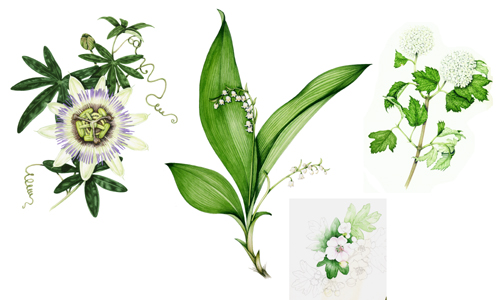
Painting White flowers: A problem needing a solution
I was painting a snowdrop the other day, and wrestling, as always, with the best way to paint the petals of white flowers. There are as many different approaches to this troublesome aspect of botanical illustration as there are scientific illustrators; so I thought it’d be worth considering.
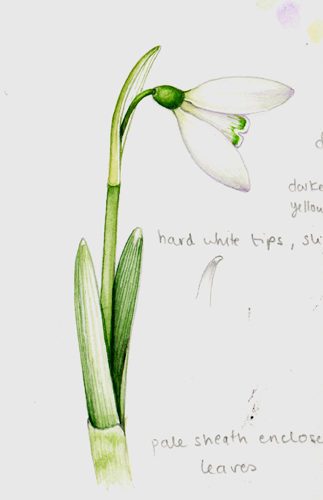
Place a leaf behind the white flower
A handy trick in the first instance, especially if the flower you’re painting is startling white, is to use the leaves as a background. This can set the white off really dramatically, and means you can leave the white more or less untouched. You do have to be a little careful not to make the composition look too awkward by twisting the leaves around, but it can be really useful.

Add a pale background
Another trick also involves using backgrounds, but in this case a background wash. All the images below are from my sketchbook studies rather than from finished paintings. I tend to favour a background mix of Windsor blue, a purple, and a touch of brown. Apply it to the edge of the petals, then add water to bleed it outwards. You can use whatever colour background wash you’d like for this approach, just be sure to keep it gentle and to fade it outwards.
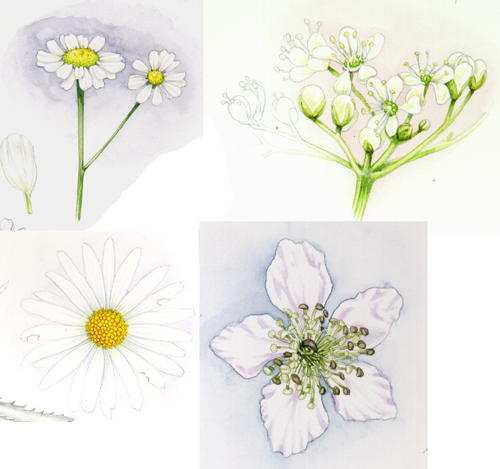
Colour on the white petals
Sometimes, though, you can’t evade the issue, and have to paint the white petals against a white background. A very light pencil can give a clear, neutral enclosing line to give the petals their shape. When using colour, the trick is to keep it light when you apply it. Do trials first to see what colour most closely matches the white in the shadows of the petals. It may be a greenish hue as with this oxeye daisy.
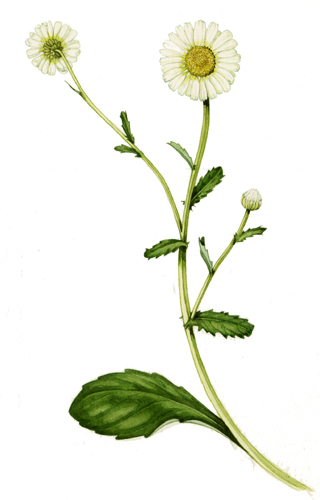
Perhaps it’ll be an ochre, as on the stem and stamens of this autumn crocus.
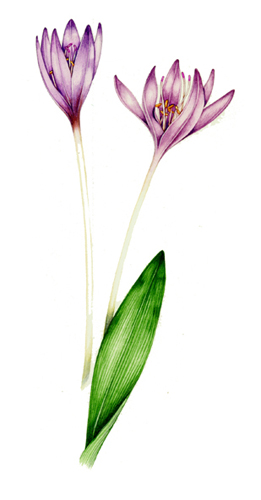
Some white petals help by being tinged with a colour, as with these daisies.
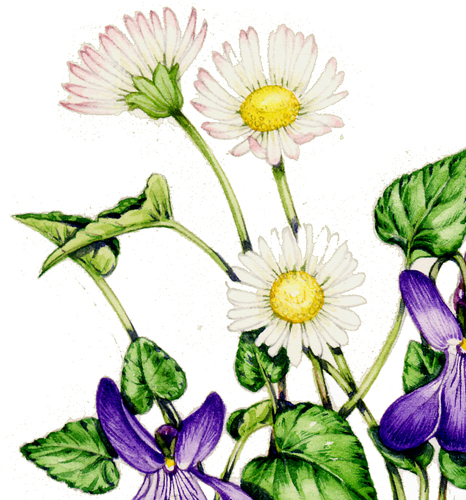
Painting whites: Looking at other botanical illustrators
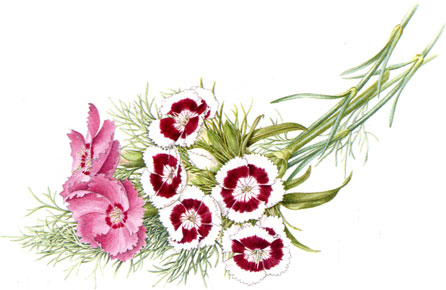
It’s also interesting to see how other illustrators have tackled the same issues; look for background washes, use of foliage, pencil lines for petal edges, and very light use of pinks, greens and blues in the paintings of Chris Hart Davies, Helga Powell and Jo Glover.
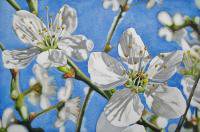
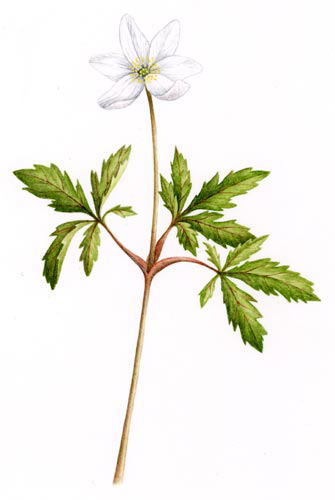


This is an area where having the specimen makes a ton of difference. I find if I put a white object physically on bright white paper (perhaps not actually watercolor paper depending on the brand, some are quite off white) and really look it almost always either has a color, or reflects a color. Sometimes it helps to close your eyes for a minute and then look again. Push comes to shove and looking at the cast shadow for color then diluting that will allow the barest of outline while still looking natural.
Oh yes, getting whites right from photo ref is a nightmare, I agree entirely. That’s a great tip, the diluting of the shadow colour. Sometimes I wish I had a “colour picker” tool for real life, like they do in photoshop, especially when it comes to ascertaining the precise hue of a shadow. With whites, indeed they almost always do have some colour. The trick is to keep it clean, that’s where I sometimes mess up. I get too involved in the minute colours on the petal and before you know it the whole flower looks grubby. I guess less is more. The echoing of the shadow is a lovely tip, I’ll remember to try that one. Thanks!
Very well done, so enjoyed watching your work.
Hi Linnea, oh I’m so glad to hear it. Thankyou! x
Dear Lizzie
I love the way you can draw your subject so easily, this is where I have trouble, I am self taught mostly botanical, I have traced but like to draw but find it difficult
Hi Molly, I think that ability to transfer what you see to the page just comes with practice. But I still get scared making the first mark on a white page. Sometimes marking out the faintest of shapes as a guide (to be erased later) can help. both with the drawing and with the fear. I keep meaning to try and do a film of the drawing process on my Youtube channnel; its just super tricky to film pale graphite….. You could try various drawing excersizes like continuous line, blind contour, or not lifting the hand from the page. All of these seem to free up the motor skills a bit. But you’re right to pinpoint the drawing as the hardest part. The rest is, to some extent, just super-posh colouring-in! Thanks for the comment. x